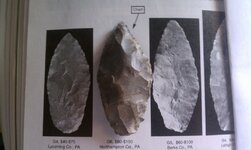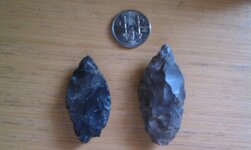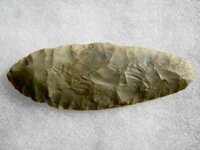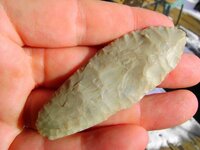Hutch in PA
Full Member
Here are two pics of a knife found in Western PA. The closest I can come on Overstreet is an Agate Basin, though I sent the pic to someone whose opinion I respect and they said 'no.' What do you think? In the 2nd pic there are two points shown...I'm referring to the one on the right.
Amazon Forum Fav 👍
Attachments
Upvote
0









